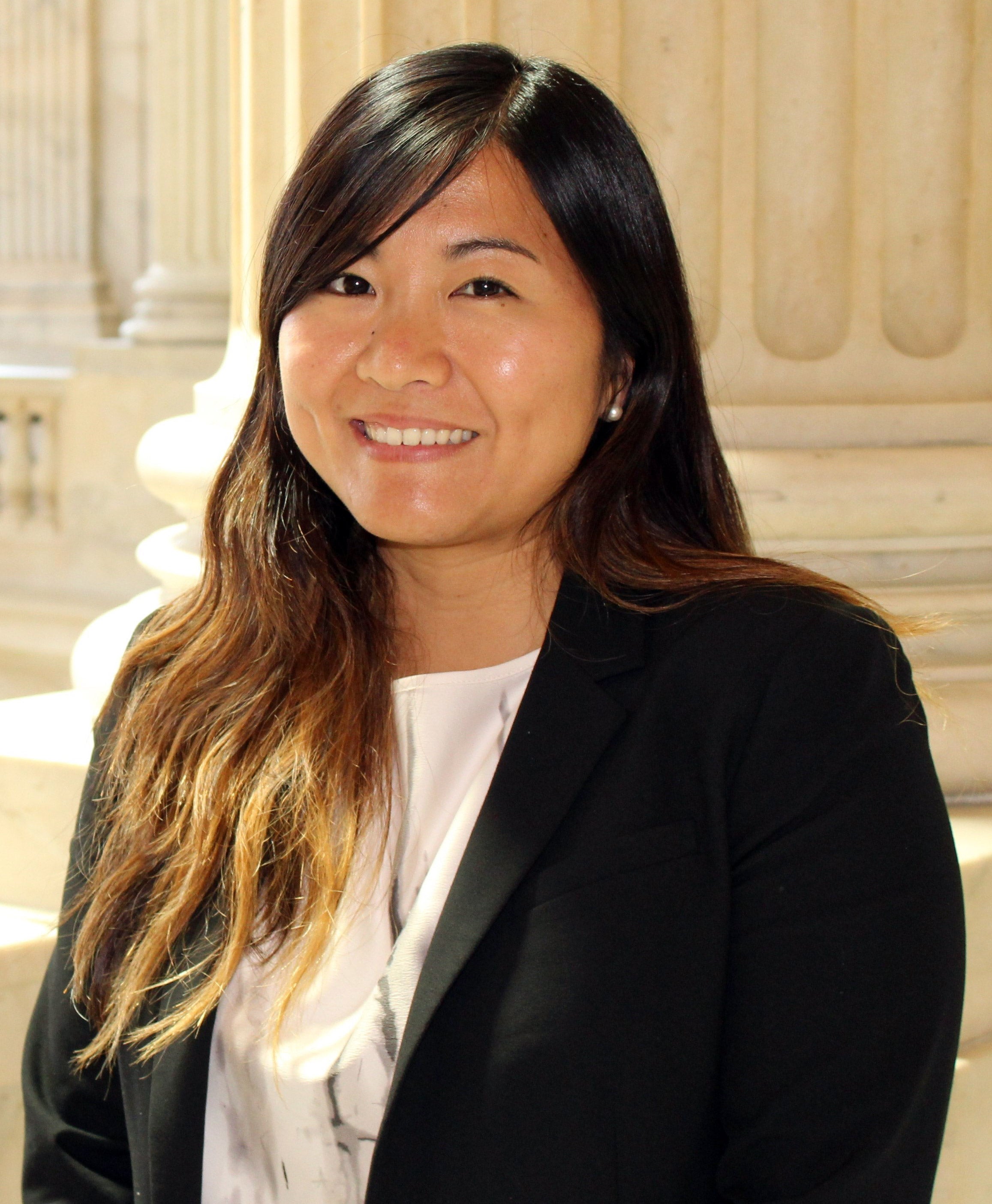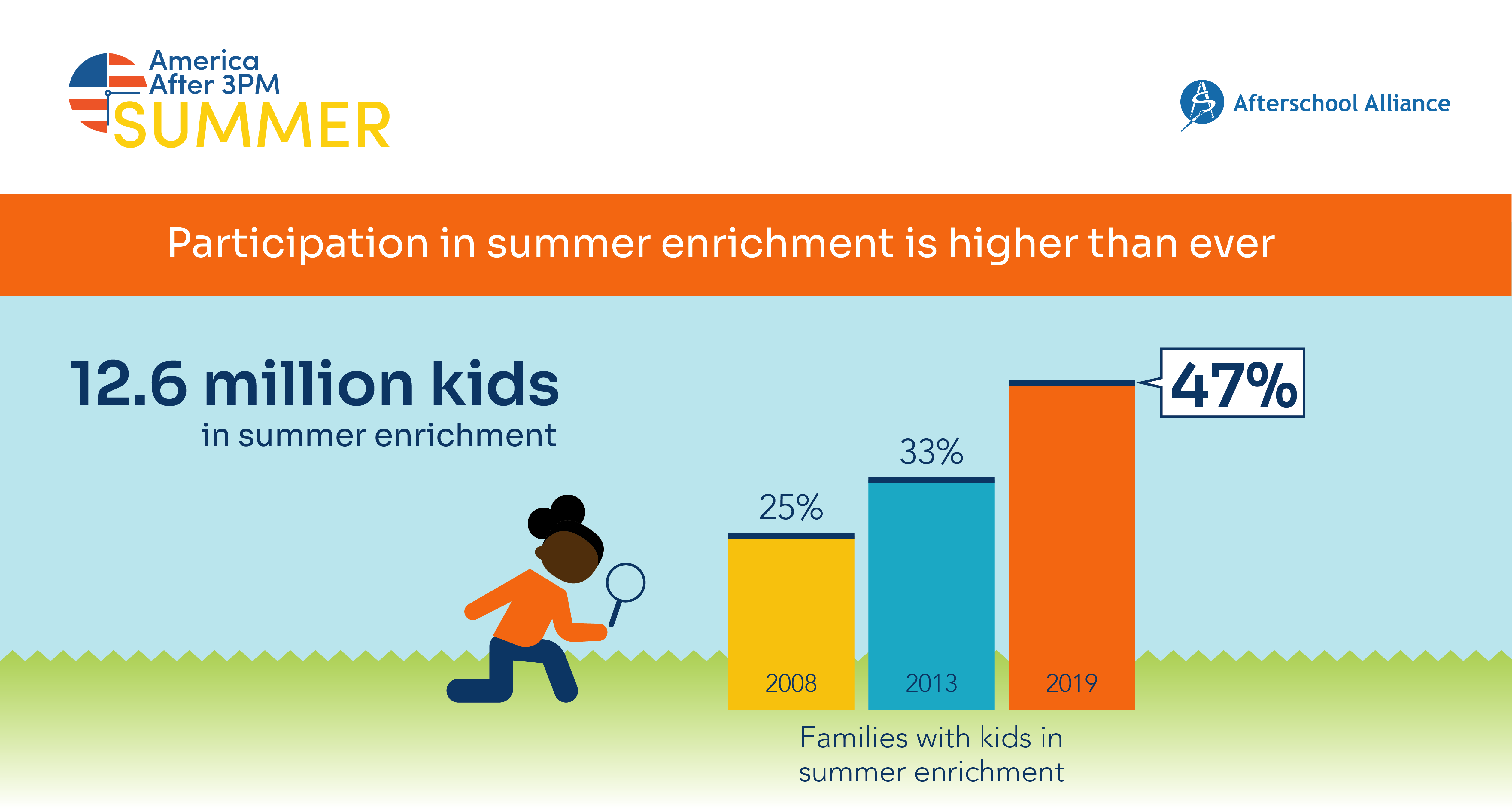As the summer of 2021 begins, many students and families are struggling to recover from the isolation, disruption and instructional loss of the pandemic. Summer programs could help. But according to a recent study that looks in-depth at summer learning in 2019 and 2020, student participation in programs remains low, despite some recent growth and soaring parent satisfaction. For every child in a summer learning program in 2019, another was waiting to get in, according to a recently released report, Time for a Game-Changing Summer, With Opportunity and Growth for All of America’s Youth.
Commissioned by the Afterschool Alliance and conducted by Edge Research, the study is based on responses from more than 29,500 U.S. families and builds on household surveys conducted in 2004, 2009 and 2014. It also includes national findings from smaller surveys of parents and program providers conducted in summer and fall of 2020 and spring of 2021, and offers a snapshot of how children and youth spent their summers before and during the pandemic.
 The Wallace Blog caught up Nikki Yamashiro, vice president of research at the Afterschool Alliance, to discuss the implications of the survey and what they might mean for a post-pandemic world.
The Wallace Blog caught up Nikki Yamashiro, vice president of research at the Afterschool Alliance, to discuss the implications of the survey and what they might mean for a post-pandemic world.
In the summer of 2019, participation in summer programming was at the highest level ever recorded by America After 3PM, but the demand is far from being met. Can you talk more about this?
This is a great place to start—these are two of the key findings from our report. It’s true, we found that between 2008 and 2019, participation in summer programs was on the rise, but despite this increase, for every child in a summer program in 2019, there was another who would have been enrolled if a program were available. Similar to what we found regarding unmet demand for afterschool programs in our America After 3PM report, “Demand Grows, Opportunity Shrinks,” the number of children who are missing out on the opportunities that summer programs offer is immense. Overall, 13.9 million children, nearly 1 in 3 not in a program during the 2019 summer, would have been enrolled in one.

What this tells us is that not only is there a tremendous demand for summer programs in the U.S., there is an overwhelming need for increased access to affordable summer programming in the U.S. When we take a look at who’s participating in programs, we found that higher income children are nearly three times more likely to participate in a structured summer experience than children from lower income families.
Why are kids from families with low incomes missing out on summer programs? What barriers are they facing and what kind of support/funding can help?
To sum it up in one word, cost. The cost of summer programs is by far the largest hurdle for families with low incomes. Our study found that more than two in five parents with low incomes who didn’t have a child in a summer program (44 percent) report that cost was an important reason why they chose not to enroll their child, nearly 10 percentage points above that of higher income households (35 percent). Transportation and not knowing what programs were available are also notable barriers, with more than one in five parents with low incomes reporting these as a factors keeping their child out of a summer program.
Unfortunately, this disparity of who can and who can’t afford programs isn’t exclusive to the summer—we found that families in the highest income bracket spend more than five times as much on out-of-school-time activities for one child annually than families in the lowest income bracket.
A bright spot is the infusion of funding through the American Rescue Plan to state and local education agencies that is being used to support summer enrichment, comprehensive afterschool and learning recovery programs. Through this investment in summer, as well as in afterschool programs, our hope is that more children and families will be able to connect to programs in their community.
How have parents’ priorities when it comes to summer programs changed since COVID-19? What is the impact of the pandemic on future demand?
This most likely isn’t a surprise to parents who are reading this, but for families who wanted a structured summer experience for their children, we didn’t find a significant shift in the leading factors parents said were most important to them in 2019 and what was most important to them in 2020. Outside of safety and cleaning precautions against COVID-19, which were new priorities for parents in 2020, the key drivers behind parents choosing their child’s summer activity, both before and during the pandemic, were a safe environment, knowledgeable and caring staff, and opportunities to build social skills.
A recent survey of parents asking about plans for this summer found that most families are prioritizing outdoor, physical, social, and/or non-traditional enrichment programs (62 percent).
According to the survey, 79 percent of summer programs plan to offer in-person and/or virtual activities for kids this year. What are some of the new challenges the providers face this summer due to COVID-19?
That’s an excellent question. We have a survey in the field right now to ask summer program providers exactly that. The purpose of the survey is to gain an understanding of the supports and services they’re providing this summer and the challenges they’re encountering in this second summer of the pandemic. Based on anecdotal stories from the field about plans for this summer and what we found in last year’s summer provider survey and a recent spring 2021 provider survey, we anticipate that staffing issues will continue to be a challenge, specifically hiring enough staff for in-person programming and the programs’ capacity to provide in-person services to every young person who would like to attend. Together with the recent survey of parents mentioned earlier, where more than 3 in 5 parents report that they feel comfortable sending their child to in-person summer experiences (63 percent), signs point to an increased demand for summer programs compared to the summer of 2020, but only time will tell. We’re looking forward to reporting back what we uncover.
What would you like policymakers to take away from this survey?
It’s my view that the findings from the survey all boil down to one fundamental premise—to meet the need for summer programming among families, in particular families with low incomes, greater investment in summer learning is critical. We found that parents value the time during the summers for their children to discover new interests, build connections, and be active and outdoors. Parents have increasingly wanted more structured summer opportunities for their children. And, during the pandemic, families counted on summer programs for supports ranging from helping their child stay connected to their peers to connecting families with community resources. Yet for many children and families, summer programs are out of reach. Taken together, these findings paint a picture of the importance of more opportunities for summer learning. With nearly 14 million children who would be enrolled in a summer program if one were available to them, the need for additional investment in summer programs to make certain that all children are able to access quality, affordable summer learning opportunities is undeniable.



